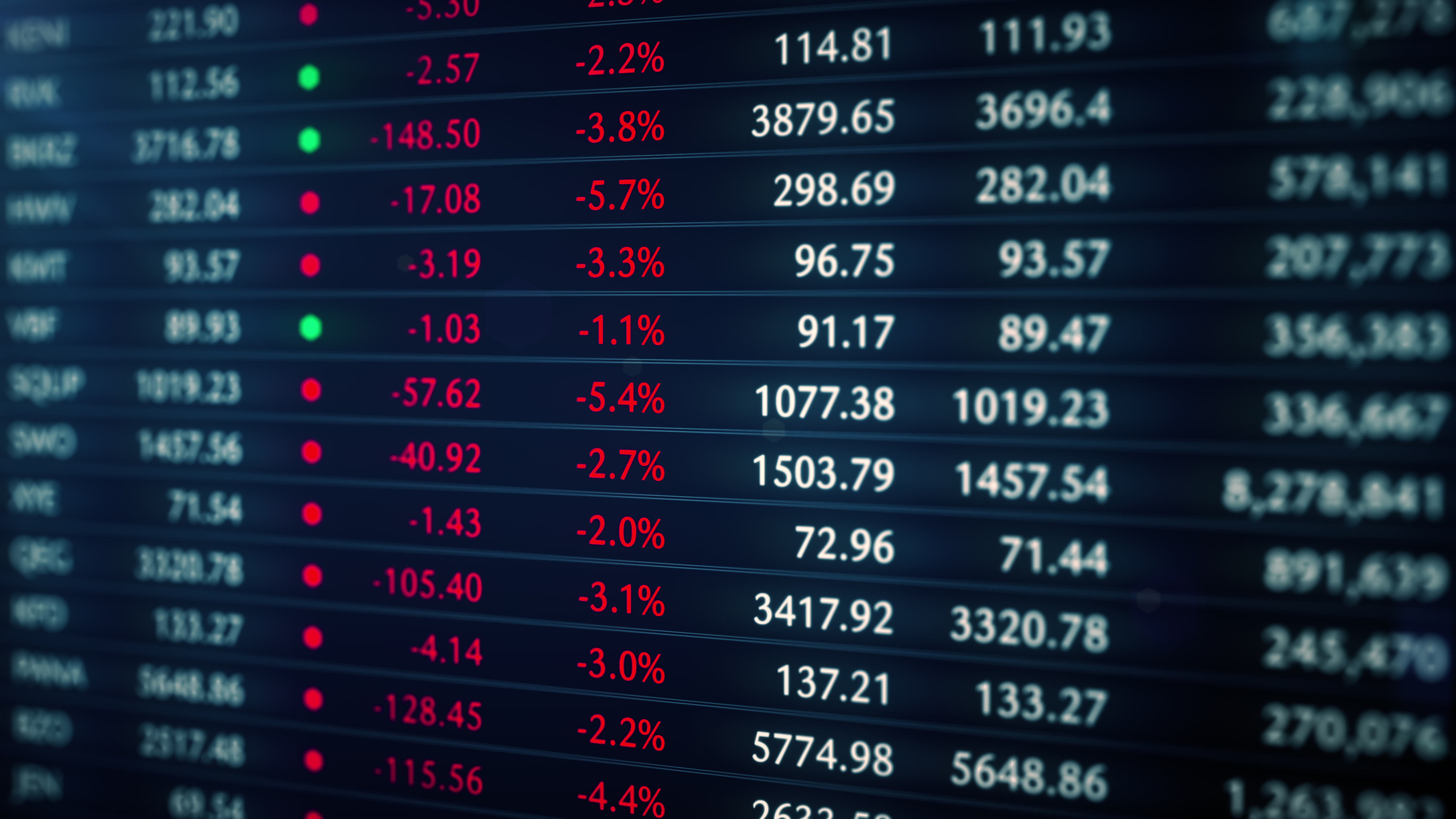
The start of 2024 is a tough act for the stock market to follow. The S&P 500 index notched 22 record highs in 2024 — all before the end of the first quarter. At the market’s peak on March 28, the S&P 500 was up 10% for the year and up 28% from the start of a powerful thrust that started last October.
It’s little wonder that the market hit a springtime speed bump, pulling back 5.5% in April before bouncing mostly back. Now, investors have to ask first whether the pullback has run its course before they consider whether the second half will deliver further gains.
We would not be surprised to see the market fall (and pick itself back up) multiple times over the next several months, within a modestly upward trajectory that delivers gains by year-end. An S&P 500 level of 5300 at year-end seems a reasonable-to-conservative target, with 5500 at the high end of strategists’ estimates. Judging by index levels alone, wrapping up at 5300 would not represent much progress beyond the first-quarter high of 5254 for the S&P 500, although it would be an 11% price gain for the year — a 12.5% return including dividends. (Prices, returns and other data in this story are through April 30, unless otherwise noted.)
But that doesn’t mean you should have closed the books in March, pocketed your gains and put the proceeds under your mattress. The market is not a monolith, and a rotation of leadership in a number of investing styles and categories will present pockets of opportunity (and some risk) that will demand careful attention to your portfolio.
In contrast to the record-setting euphoria that characterized the start of the year, however, your patience is likely to be tested in a market contending with several crosscurrents, rising uncertainty and a pick-up in volatility, especially as we approach the U.S. election. Investors who soldier on will be rewarded, says Yung-Yu Ma, chief investment officer of BMO Wealth Management, U.S. “We continue to expect more flow than ebb, more push than pull and more forth than back.”
It might help to remind yourself that corrections are a fact of investing life, and the market’s recent stumble didn’t even come close to one. Corrections are declines of 10% or more, but less than 20% (which is when a bear market kicks in). There have been 10 corrections since 1990, according to investment research firm CFRA, with an average market decline of 14.7%.
“One thing to remember about a correction is the speed of recovery,” says CFRA’s chief investment strategist, Sam Stovall. Since 1990, the S&P 500 has returned to breakeven in an average of just three months.
One pillar gone
Still, there’s no arguing that an important support for the stock market is gone — or at least missing for now. Early in the year, the market was buoyed by the expectation of six or seven interest rate cuts this year from the Federal Reserve, which would have significantly reversed the monetary tightening put into effect by the 11 rate hikes in 2022 and 2023 that brought the Fed’s benchmark rate from near zero to a range of 5.25% to 5.50%.
Inflation appeared to be waning, with the Fed’s target rate of 2% seemingly within reach, and it looked as if the central bank was going to pull off an economic miracle — a so-called soft landing, taming debilitating price hikes with just enough tightening to cool an overheating economy without breaking its back.
Not so fast. “The market was overly optimistic about immaculate disinflation,” says Phil Orlando, chief stock strategist at financial firm Federated Hermes. Inflation proved tough to vanquish, and a spate of recent economic reports show prices have headed north instead of south. The government’s recent release of the consumer price index marked the third straight month of no improvement. For the 12 months ending in March, the inflation rate was 3.5%, up from a 12-month rate of 3.2% in February and, for now, about where Kiplinger sees it ending the year.
Inflation pain points include gas prices, housing and auto insurance costs. Overall, inflation should continue to moderate, although recent months have shown that the “last mile” to the Fed’s target rate can take a twist here or a turn there.
The Fed’s preferred inflation barometer runs lower than the CPI but confirms the recent uptick.
Traders are now expecting just one or two cuts from the Fed this year. But no cuts are a distinct possibility and, although unlikely, the possibility of rate hikes has entered the conversation. A “slower to lower” Fed and “higher for longer” economic growth, inflation and interest rates are now the expected order of the day.
Bond yields have risen in anticipation, with the yield on 10-year Treasuries touching 4.7% in late April, before receding a bit. Inflation beneficiaries have rallied, including commodities as well as energy and materials stocks. Says Jason Draho, a U.S. investment strategist at UBS Global Wealth Management: “The overarching macro theme for the past few months is reflation.”
It’s also worth noting that despite the market’s hiccup in reaction to diminishing prospects of near-term rate cuts from the Fed, rising interest rates historically haven’t been as bad for bull markets as investors might think.
Research from market strategist Brian Belski at BMO Capital Markets found that, going back to 1990, the S&P 500 has gained 13.9%, on average, during periods when 10-year Treasury yields were on the rise, compared with 6.5% during falling-rate periods. “This makes sense, since lower rates can be reflective of sluggish economic growth and vice versa,” Belski says.
A sturdy second support
Without an accommodative Fed to cut rates, at least until closer to year-end, the market is left with a second, arguably more important pillar of support — namely, a surprisingly resilient economy and its corollary, healthy corporate earnings.
Although a lukewarm report on first-quarter economic growth showed a slowdown, economists concluded that it wasn’t as bad as it looked and that the report understated strong domestic demand. That was followed by an employment report showing moderating gains in job and wage growth. And a manufacturing index that had finally pulled into expansion territory in March contracted again in April.
Nonetheless, many economists have been adjusting their forecasts higher for gross domestic product growth in 2024 and see little sign of anything resembling a recession or even stagflation, which occurs when the economy stalls but inflation remains high. In April, for one example, Wells Fargo Investment Institute boosted its outlook for GDP growth this year from 1.3% to 2.5% (which is also the growth rate that Kiplinger forecasts).
“We wouldn’t be surprised to see close to 3% GDP growth this year,” says Ryan Detrick, chief market strategist at money management firm Carson Group. Labor markets and consumer spending are still strong, he says, and the industrial side of the economy is picking up. “It’s positive, especially if the consumer slows down a bit, for that baton to be passed to manufacturing as the economic cycle ages,” Detrick says.
Meanwhile, corporate profits are robust. Analysts expect earnings for S&P 500 companies to rise an average 10% in 2024, according to earnings tracker LSEG I/B/E/S, and another 14% in 2025. That’s after hardly any growth at all in 2023.
Better yet, the rest of the market is starting to share in the wealth that heretofore has been concentrated in the so-called Magnificent Seven, the tech-focused behemoths that have dominated lately. “Earnings growth is broadening out, allowing the rest of the market to catch up,” says Lori Calvasina, head of U.S. equity strategy at RBC Capital Markets.
The chart on the facing page, from FactSet Research, another earnings research firm, shows that by the fourth quarter, analysts expect earnings growth of 15% from the same quarter a year ago for the Mag Seven, but they expect 18% for the 493 companies that make up the rest of the S&P 500. Contrast that with year-over-year earnings growth expected for the first quarter of nearly 39% for the Mag Seven and negative 4% for everyone else.
“The year-on-year revenue and earnings growth that we’ve seen out of tech growth names has been eye-popping,” says Federated Hermes’s Orlando. “I’m not telling you they’re going to lose money, but the pace of growth is going to slow.”
Crosscurrents to watch

One thing that investors can unfortunately count on in an election year is an increase in market volatility. But these choppy markets tend to resolve to the upside. “Once you’re through the election and uncertainty is alleviated, most of the time you see a rally. We don’t think this time will be different,” says Detrick. History shows average stock market gains of more than 7% in presidential election years (see the chart on page 24).
Perhaps more important than who lives in the White House is the makeup of Congress: Stocks have gained the past 13 times we’ve had a divided Congress, Detrick’s research shows. Since 1951, the S&P 500 has logged annual gains of 15.7%, on average, when Congress is split but 8% when one party controls both the House and the Senate.
Drilling down to the sector level, a survey of industry analysts at RBC Capital Markets shows that a Trump sweep or a Trump presidency with a split Congress would be favorable for energy, healthcare and materials stocks. The analysts’ views on sector returns were more neutral in a Biden sweep or split.
Overall, says RBC’s Calvasina, “the conclusion is that the outcome of the election matters to some sectors and industries more than others, but it’s not the main thing that’s going to drive the markets over the rest of the year.”
Geopolitical tensions are another worry for investors, with an ongoing war between Russia and Ukraine and escalating conflict in the Middle East. “We all sound crass talking about human-life stories in terms of dollars and cents, but that’s part of our job,” says Mark Hackett, chief of investment research at insurer Nationwide Financial.
Other than initial reactions, the market typically is not affected much by geopolitical events, he notes. “There’s usually a momentary reaction as people are scared, uncertain or sad—but these events tend not to be disruptive long-term.” It would have been a mistake, he adds, to have sold stocks when Russia invaded Ukraine, or last October, when Hamas attacked Israel.
But Paul Christopher, head of global market strategy at Wells Fargo Investment Institute, worries that the current Middle East conflict “has entered a new realm. There’s a real potential there for sudden surprises,” he says. Threats to oil supplies in a worst-case scenario could send crude prices surging, he says, “in which case economic slowing in the U.S. would accelerate quite a bit.” Oil prices have been well behaved so far.
But potential oil shocks are one reason strategist Ed Yardeni, of Yardeni Research, has been recommending that investors overweight energy and precious metals stocks in their portfolios. “They’re shock absorbers against any shocks from these two wars,” he says.
Buy the new guard
Even down from record highs, stocks aren’t cheap, with the S&P 500 recently trading at 20 times expected earnings. But there’s a wide variation among sectors: Tech stocks sport a P/E of 27, on average, while energy, the cheapest sector, trades at a P/E of less than 13.
A pivot away from the large, growth-focused stocks in the technology and communications services sectors — or at least some profit-taking — makes sense in order to rebalance into more value-oriented fare. “If you’re going to fish in a pond, fish in one with stocks trading at 14 times earnings with accelerated earnings growth,” says Hackett. “That’s preferable to 30 times earnings with decelerating growth.”
So-called cyclical stocks, those that do best when the economy is strong, generally fall into the value camp. Sectors you should have on your radar now, according to several strategists, include energy, materials and, depending on who you ask, industrials or financials. Cyclicals also tend to do well in the second half of election years as optimism begins to emerge, notes strategist Calvasina, who recommends overweighting energy, financials and materials stocks.
Of course, it’s possible that the economy isn’t as strong as some make it out to be, says Wells Fargo Investment Institute’s Christopher. “We think the economy will have a saucer-shaped trajectory this year,” he says, with midyear weakening that is not entirely apparent yet. But that will help cool inflation, spur Fed rate cuts and set up accelerating growth for the economy in 2025, so his advice is the same: Stock up on cyclicals, including energy, industrials and materials.
Investors looking for a top-notch value fund can consider Dodge & Cox Stock, a member of the Kiplinger 25, the list of our favorite actively managed no-load funds. Or consider Oakmark, a fund whose long-term returns have rewarded patient investors. (To see what stocks Oakmark comanager Bill Nygren likes now, see “5 Cheap Stocks to Consider,” on page 19.) To add broad sector exposure to your portfolio, consider exchange-traded funds, including Energy Select Sector SPDR, Vanguard Financials and Fidelity MSCI Materials.
Profit from strength in industrial stocks by zeroing in on infrastructure plays, says BMO strategist Ma. Three separate government spending bills are pouring billions of dollars into green energy, roads and bridges, semiconductor manufacturing facilities, and improvements to the electricity grid, among many other initiatives. “These projects take a long time to get going and have a long runway — only a fraction of the buildout has taken place,” says Ma.
Industrials are also getting support from the longer-term trends of onshoring, reindustrialization of the U.S. and building up supply-chain resilience. There’s even a link to the artificial intelligence megatrend, he says, as a huge need for data centers and the electricity to run them comes into play for industrial firms.
Ma likes the diversified approach of Global X U.S. Infrastructure Development, an ETF with 73% of assets in industrial firms and 20% in materials companies (which produce and process the raw materials that go into infrastructure production — think concrete, metals, plastics and so on). Among the ETF’s top 10 holdings are Emerson Electric, a member of the Kiplinger Dividend 15 with a 1.9% yield; industrial machinery and supplies company Parker Hannifin; and Vulcan Materials, one of our January Investing Outlook picks for 2024, up 32% since our recommendation but with more room for gains. All are rated “buy” by Wall Street analysts.
It’s prudent to balance cyclical bets with a stake in defensive sectors. For Calvasina, that’s utilities. Consider Invesco S&P 500 Equal Weight Utilities. For Christopher, healthcare is an undervalued defensive choice. Fidelity Select Health Care is a Kip 25 fund.
Small-company stocks are on some strategists’ buy lists, but others remain wary, as previous rallies have fizzled. “There’s a long list of why they’re interesting,” says Calvasina. Valuations are at a deep discount compared with large-company stocks; analysts are increasingly revising earnings estimates upward; and forecasts for economic growth are moving higher. “In an above-average or hot economy, small caps outperform, and it looks like that’s where we’re headed,” she says.
The problem? With typically higher debt levels, small caps feel the pinch of higher interest rates more acutely. They’re unlikely to rally convincingly until the Fed is certain that inflation is under control and cuts rates accordingly.
“You’ve got to kick off the cutting cycle, or be certain it’s around the corner,” says Calvasina. “I covered small caps for a long time — they’re like my first professional child. But I think Fed rate-cut expectations are all over the place at the moment.”
Still, small caps deserve a spot in a diversified portfolio. Index investors can improve their chances with a fund that tracks the S&P SmallCap 600 instead of the Russell 2000; the former has a profitability requirement for constituents that raises the quality bar. Consider ETF 20 member iShares Core S&P Small-Cap. Or employ the services of a skilled manager in a fund such as Needham Aggressive Growth.
Views on international markets are mixed. Among developed countries, Europe is “not quite warming up, but getting less cold,” says BMO’s Ma. Positives include modest valuations and anticipated rate cuts from the central bank, but for now he remains neutral. Japan, by contrast, is a bright spot.
A number of structural corporate governance changes are increasing shareholder value, says Ma, such as aligning CEO incentives with stock performance, returning cash to shareholders via more dividends and buybacks, and using cash wisely for acquisitions. (Historically, Japanese companies have hoarded cash and been resistant to corporate takeovers.)
“Structural change like this is rare,” says Ma. “It tends to have a multiyear runway, and the market tends to underestimate it.” He recommends iShares MSCI Japan, an ETF that provides exposure to a broad array of companies.
Dan Suzuki, deputy chief investment officer at Richard Bernstein Advisors, likes emerging markets. They’ve languished for years, and a stronger dollar weighs on nations with high dollar-denominated debt loads. But Suzuki sees the green shoots of recovery as global economic growth picks up and a re-flation wave benefits commodity-producing nations. Actively managed Baron Emerging Markets, a Kip 25 fund, is our choice. (For more insights from Suzuki, read his thoughts for the rest of 2024.)
Finally, fixed-income investors should consider a “barbell” approach to a mercurial bond market. With the yield curve still inverted, short-term bonds and bond funds deliver superior yields for now and are a good place to keep cash you’re waiting to deploy. T. Rowe Price Ultra-Short Term Bond, yielding 4.9%, is an option.
But consider locking in some long-term bond exposure if and when opportunities arise, says Federated’s Orlando. In a volatile interest rate market, 10-year Treasury yields could retest higher levels in the second half, he says. But with the Fed having completed its rate-hiking cycle, the next move is more likely down; Orlando sees the 10-year yield at 3.8% or lower over the next year or so. (Kiplinger expects the 10-year note to end 2024 with a 4.3% yield.) In that case, recent yields of 4.6% or 4.7% look pretty good.
“Where’s the top? I can’t pick the exact spot. But investors who have lengthened out their bond duration will be happy they did — much like people who locked in 3% mortgage rates a few years ago,” he says.
Buy Treasuries directly from Uncle Sam at TreasuryDirect.gov or from your broker. Fund investors can’t “lock in” yields because bonds flow in and out of fund portfolios, but they might consider Vanguard Long-Term Treasury Fund, with a 4.5% yield. Stick with high-quality fixed-income holdings. There’s little in-centive to reach for yield, with the spread between yields on Treasuries and those on lower-rated bonds “incredibly tight,” says Hackett. “You’re not rewarded for being aggressive.”
Note: This item first appeared in Kiplinger Personal Finance Magazine, a monthly, trustworthy source of advice and guidance. Subscribe to help you make more money and keep more of the money you make here.







